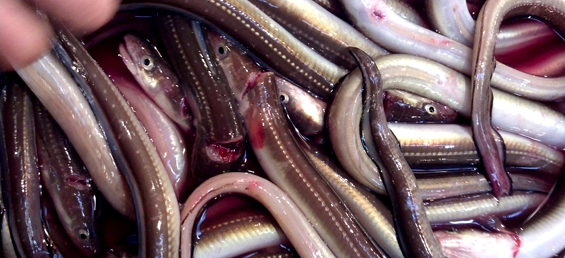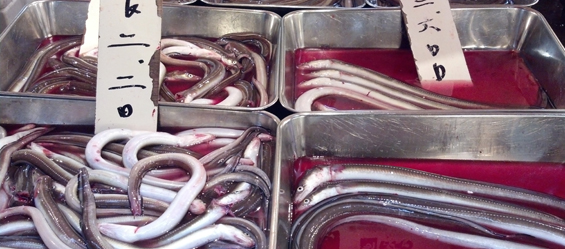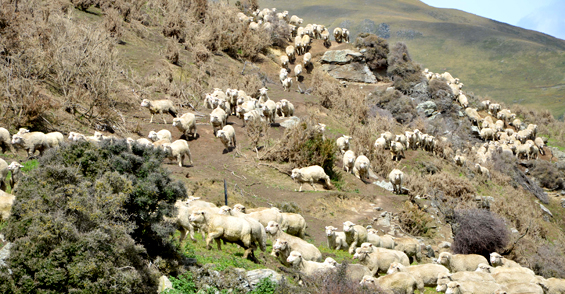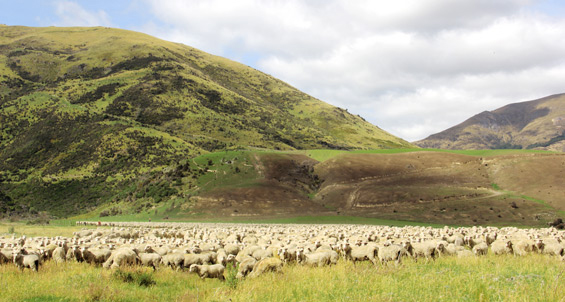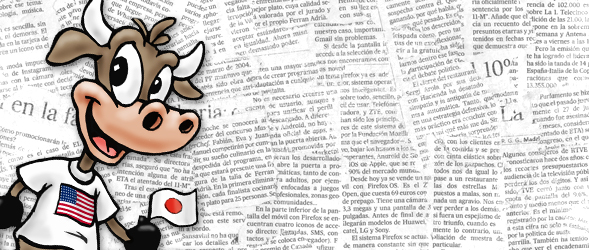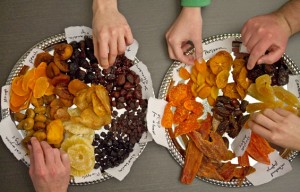When we launched MarxFoods.com seven years ago, we decided not to sell foie. I never wanted to be big brother, but I also didn’t want to sell products that I didn’t believe in. This is the story of how I came to challenge my convictions.
In short, I’ve seen the production of foie ducks, but have begun to wonder if foie production isn’t any worse than commodity chicken production. After comparing the amount of foie each person (even big fans) consumes in a year vs chicken, I wonder if it isn’t hypocritical of people (including me) to consume one but eschew the other. As a result I’ve decided to start carrying foie gras, while providing a candid description of what I observed at a foie farm, so people can make their own decision.
Interested in the long version? Here we go:
Ever since deciding not to carry foie, I have had dozens of people try to change my mind and exactly zero people gave me props for deciding to decline. We are definitely missing opportunities by not selling foie, but I thought I was doing the right thing.
When a very liberal, animal-loving, sustainability-minded chef friend told me to get over it, I really started to reconsider. So, I told a foie company that I’d sell their product but first wanted to see for myself how the product was produced. People in the industry swore up and down that foie production is humane.
If we start carrying foie, I want to be candid about how it’s produced.
The Un-Sugar Coated Truth – What it’s like on a French foie gras farm:
So, I finally went to check out a foie gras farm. Though it was a supposedly pre-arranged visit by the meat company that buys from this particular farmer, the farmer did not know we were coming. At first I thought they wouldn’t let us in, but we were able to get a tour after we luckily were able to get in touch with the meat company owner.
This was a perfect opportunity. Because we surprised them, I got an unscripted, unvarnished window into how a farm operates.
The ducklings start in very clean and spacious barns with access to pasture when the weather is agreeable, then they are moved outside to expansive grassy pasture with access to a barn in inclement weather. For the first 12 weeks they essentially live like free-range, grass fed animals…the ideal.
The last two weeks of their life looked a little rough to me. This is the period of time in which they go through the gavage process that involves force feeding a cornmeal type product and causes their livers to get fatty and swell. Here’s what I observed: The ducks are held in 5-bird wire cages suspended over the floor. Their poop drops to the floor beneath and pools in a collection area on the floor. That’s not the end of the poop story, because enough poop landed on the wire cage which is then laid in by the birds. The birds were definitely slightly beige from poop. I could see it gumming up their feathers. The barn smelled mildly of feces.
They keep the barn dark 24 hours a day in order to keep the birds calm if that tells you anything at all. The birds can and do move around a little. There’s enough room in each cage that they could squeeze in another 3-5 birds, but not enough for the birds to spread their wings completely. Twice a day, they get force-fed the moistened cornmeal, but only if they don’t still have cornmeal in their throat remaining from the last feeding. They are handled gently so as not to damage their gullet.
Some of the birds are gasping, they look full. They appear frustrated, but who am I to determine that. They aren’t making noises. I would ordinarily equate noises with discomfort. When I mention that the ducklings in barns live in clean, spacious barns & appear very healthy, trying to be positive, the response is that you have to take good care of them otherwise you lose your investment.
I didn’t see the gavage, but I didn’t need to. I didn’t like what I saw. It’s clear that this production is not ideal even without the force feeding.
The birds do not run to get fed, as proponents claim. They are in small cages. They can’t run to the food and can’t run away.
Is foie gras really worse than commodity meats?
But this led me to be thinking about bigger questions about my own hypocrisy. The unavoidable reality is that I eat chicken and eggs in restaurants … and they aren’t always labeled as free range (and free range merely means “allowed access to the outside”). In mediocre restaurants I can always count on a salad with grilled chicken…or chicken dishes in ethnic restaurants. Those chickens likely are raised in similar small cages their entire lives, not just in the last 2 weeks.
So, what do I eat a year of chicken? 30 lbs? The average American consumes almost 90lbs of chicken a year.
What does a heavy foie user eat? 1/2 lb? 1 lb? Foie is an easy lightning rod because of the force feeding, but is it overblown? No one eats perfect. So, should the question be “what is the best we can do?” Or “how should we avoid the worst?” Am I a hypocrite for eating chicken while avoiding foie?
The Decision:
Some people want foie gras. Some people want to avoid it. I’ve decided to be as honest as possible about my personal experiences with the foie farm, in the hopes that people can make informed decisions, then let them decide rather than holding the door shut.
My own thoughts on the subject, as you can see above, are still very much in flux. I’d love to hear your own thoughts on the subject, whether they be pro or anti foie. Please leave me a comment below with what you think.

